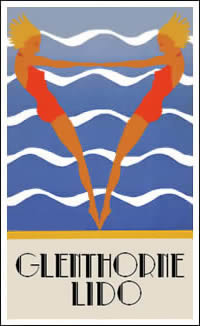
We think
that this is the first time that a lido has been built for a
model railway. At one time they were very popular but now,
only a few are still in use and in good repair. We used this
excellent
website as a reference. The ground floor of the building
is based on the art deco Morannedd Cafe at Criccieth, North
Wales.
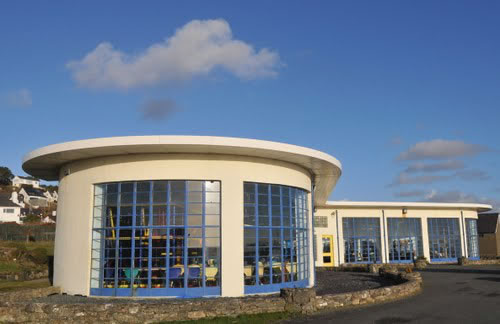
Further
inspiration comes from the Saltdean Lido near Brighton. The
lido will be refreshed by a seawater pumping house which
also has filtration. It will sport a rakish diving platform.

click on image to
enlarge
The windows
are a very distinct feature and a slightly different
construction method is called for. The window frames are
printed on clear glossy vinyl which is attached to clear
acrylic formed to the shape of the building. We eventually
changed the number of windows and their proportions which
improved the look of the building in model form.
The
structure is built on plywood. The pool area is clear. The
sea wall will surround it.

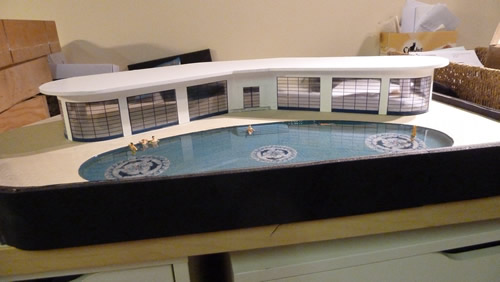
The
building and sea wall was made using foam board.
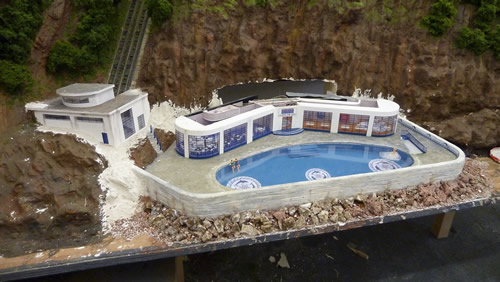
The
interior of the building is fully detailed and lit.
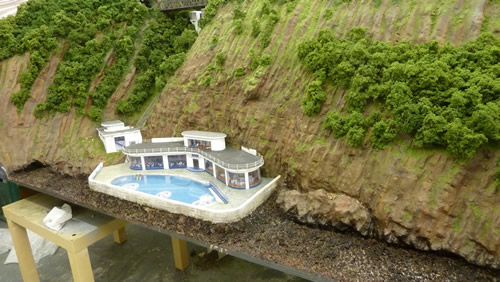
The
completed building prior to detailing the exterior
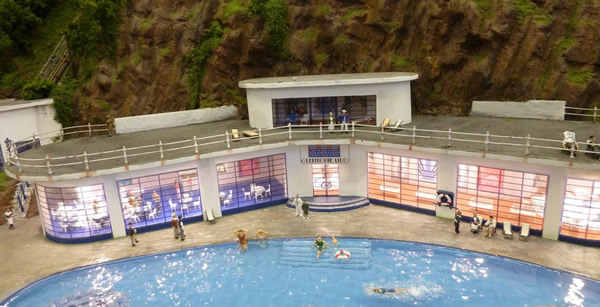
The Lido at
nightfall
The Swimming pool
Making the lido building was an
enjoyable straightforward task. I only wish I could say the
same about the swimming pool! I wonder how many modellers
have ever tried to make one. I certainly hadn't before. I
rather question whether pre-war sea water swimming pools
were as clear and enticing as most pools are nowadays. I did
find some early colour photos of the Saltdean Lido in
Brighton and at least in that case, the water looked
wonderful.
The Glenthorne pool is a scale
110 feet long and is built with scale depths. There are a
few people in the pool and I sought to make the water as
realistic as possible. Firstly, I wanted to have shadows
playing along the bottom and I discovered that this
necessitated using two resins of differing refractive
indices to achieve this. The first resin did not cure
properly and the entire pool had to be removed and remade.
The new polyester clear cast resins worked better but
reacted with the pool walls. Eventually, I discovered that
these types of resins abreact with titanium dioxide, an
ingredient used in mixing the paint colour of the pool. In
the end, I made seven pools and painted seven sets of little
people. The problem was only solved when I had resin gel
mixed specially for me to colour the pool walls! The entire
process took a bit over a month!
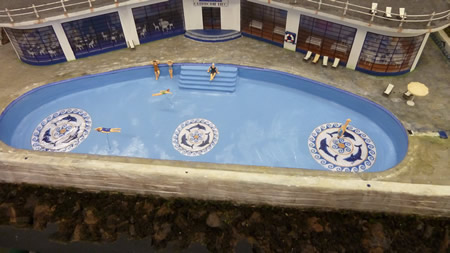
The final
pool, finished with coloured gel coat, awaits the resin
pours.
I am delighted with the final
result but it only goes to show that what appears to be a
simple task can easily turn into a nightmare.